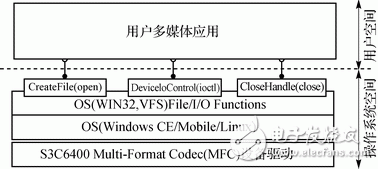Prim algorithm and optimization implementation
With the rapid development of embedded systems, an increasing number of devices such as smartphones, PDAs, and tablets now support high-definition video capture and playback. These HD video capabilities are widely used in gaming consoles, surveillance systems, video conferencing equipment, and digital network TVs. The implementation of these features relies heavily on advanced video hardware codec technologies. This paper explores the implementation of H.264 video hardware codec using FFmpeg on the S3C6410 processor, offering a practical reference for developers working on HD video solutions in digital entertainment, video surveillance, and communication systems.
FFmpeg[1] is a powerful open-source multimedia framework that supports a wide range of audio and video formats. It includes a comprehensive library called libavcodec, which provides encoding and decoding capabilities for various media types. FFmpeg supports over 40 encodings, including MPEG4 and FLV, and more than 90 decodings, such as AVI and ASF. Popular players like Storm Video in China and MPlayer abroad utilize FFmpeg for their core video processing tasks, making it a fundamental tool in multimedia applications.
The S3C6410[2], developed by Samsung, is a high-performance application processor based on the ARM11 architecture, capable of reaching up to 800 MHz. It integrates multimedia hardware acceleration, supporting multiple video codecs such as MPEG4 SP, H.264/263 BP, and VC1 (WMV9), with frame rates exceeding 30 fps. This makes it ideal for mobile devices like smartphones, tablets, and game consoles. Notably, the Meizu M8 smartphone also uses this processor, highlighting its widespread adoption in the consumer electronics market.
While FFmpeg offers a user-friendly API for implementing software-based video codecs [3], it faces limitations when handling complex codecs like H.264 in resource-constrained embedded environments. To address this, this paper presents a method for integrating H.264 hardware codec into the S3C6410 platform using FFmpeg within an embedded Linux system. By analyzing the FFmpeg video encoding process and the S3C6410's video processing capabilities, we demonstrate how to implement efficient hardware-based video codec solutions.
1. FFmpeg Video Codec Process
FFmpeg consists of three main modules: encode/decode, muxer/demuxer, and memory operations. The encode/decode module, located in the libavcodec directory, handles the actual encoding and decoding of audio and video. The muxer/demuxer module, found in libavformat, manages the packaging and unpacking of audio and video streams. Lastly, the utility module, stored in libavutil, provides essential functions for data handling. This modular structure allows FFmpeg to be highly flexible and extensible.
The decoding process in FFmpeg typically involves four key steps:
1. Register all supported codecs and demuxers using the av_register_all() function. This initializes the internal data structures that store information about available codecs and formats.
2. Open the input file using av_open_input_file(), which detects the file format and locates the appropriate demuxer from the registered list. This step prepares the system to extract video and audio streams.
3. Retrieve stream information via av_find_stream_info(), which identifies the video format and selects the corresponding decoder. The decoder is then initialized using avcodec_open(), allowing it to decode subsequent frames.
4. Decode individual video frames using avcodec_decode_video(), which processes each frame and outputs the decoded result. The encoding process follows a similar flow but uses encoders instead of decoders.
To integrate a custom video codec into FFmpeg, two critical steps must be followed:
1. Implement the codec according to FFmpeg’s specifications, ensuring compatibility with its internal structures.
2. Register the custom codec using the REGISTER_ENCDEC(X,x) macro, so that it becomes available during runtime. This ensures that FFmpeg can locate and use the custom codec when needed.
2. S3C6410 Processor Video Codec Method
The video codec architecture on the S3C6410 is designed to work seamlessly with the operating system through device files. As shown in Figure 1, the system is divided into kernel space and user space. The video codec is accessed as a device file, enabling standard file operations such as opening, reading, writing, and control commands (ioctl). This design simplifies integration with existing applications and ensures efficient data transfer.

Figure 1: S3C6410 Video Codec Software Architecture
The specific workflow includes:
1. Opening the codec device file using the open() function.
2. Mapping the input/output buffers between user space and driver space using mmap(), which improves performance by reducing data copying overhead.
3. Initializing the codec via ioctl calls, setting parameters for encoding or decoding.
4. Processing video data in a loop, where each frame is encoded or decoded using ioctl commands.
5. Closing the device file after all data has been processed.
It is important to note that both encoding and decoding operate on a per-frame basis, requiring continuous looping until all data is handled. Although the codec appears as a device file, it cannot be accessed using standard file read/write functions. The underlying driver does not support these operations, a detail that is often omitted in official documentation. Understanding this nuance is crucial for successful implementation on the S3C6410 platform.
YIWU JUHE TRADING COMPANY , https://www.nx-vapes.com